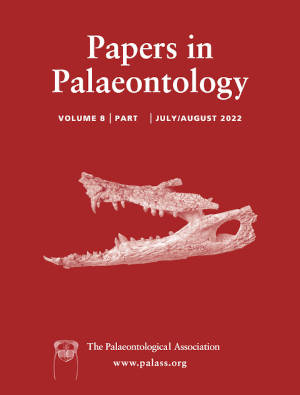Article: Digital endocasts from two late Eocene carnivores shed light on the evolution of the brain at the origin of Carnivora
Publication: Papers in Palaeontology
Volume:
8
Part:
2
Publication Date:
2022
Article number:
e1422
Author(s):
Therese Flink, and Lars Werdelin
DOI:
10.1002/spp2.1422
Abstract
Abstract The evolution of the brain at the origin of Carnivora remains poorly understood, largely owing to the limited number of cranial endocasts known from Carnivoramorpha and basal crown Carnivora. Here, we use x-ray computed tomography to create digital endocasts of two early carnivores, Quercygale angustidens and Gustafsonia cognita. Quercygale angustidens is generally regarded as the sister taxon to Carnivora and Nimravidae and is thus of great interest to further our understanding of the evolutionary changes that occurred at the origin of Carnivora. Gustafsonia cognita provides a comparison to a contemporary crown carnivoran. We describe the endocasts of these two taxa, placing them in the context of carnivoramorphan phylogeny. Both endocasts preserve the cerebellum in great detail, resulting in a better understanding of the morphology of this part of the brain in early carnivores. Gustafsonia cognita, despite its small size, geological age and basal position, displays a sulcal pattern typical of Amphicyonidae, reaffirming its position within the family. Nimravids; and early carnivorans, such as Gustafsonia cognita, Proailurus lemanensis and Hesperocyon gregarius, have more expanded neocortices than Quercygale angustidens. Current evidence suggests that the increase in gyrification in basal Carnivoramorpha occurred mainly through elongation of existing sulci and entered a new phase at the origin of crown Carnivora. Additional sulci appeared in early members of the order, resulting in distinctive sulcal patterns in the different carnivoran families. Nevertheless, more endocasts of basal carnivorans and carnivoramorphans are needed to better understand the processes driving the evolution of the brain in this group.
